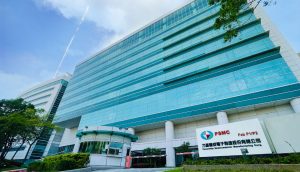Popular Keywords
- About Us
-
Research Report
Research Directory
Semiconductors
LED
Consumer Electronics
Emerging Technologies
- Selected Topics
- Membership
- Price Trends
- Press Center
- News
- Events
- Contact Us
News

The semiconductor supply chain is accelerating its globalization strategy. On February 29th, PSMC announced its collaboration with Tata Electronics in India to construct the country's first 12-inch fab in Dholera, Gujarat. The construction of the fab is expected to commence within this year. Acco...
News

According to a report by TechNews citing an article from the international column Project Syndicate, Burn Lin, former R&D Vice President of TSMC, Chintay Shih, former President of the Industrial Technology Research Institute, and Chang-Tai Hsieh, an Academia Sinica member and economics professo...
News

TSMC has announced the latest appointment of Senior Vice President of R&D Dr. Y.J. Mii and Senior Vice President of Operations Mr. Y.P. Chyn as Executive Vice Presidents and Co-Chief Operating Officers of TSMC today, per TSMC’s earlier press release. According to the press release, followin...
News

Rapidus, a foundry company established through Japanese government-industry collaboration, aims to mass-produce 2-nanometer chips by 2027. According to Rapidus, Canadian artificial intelligence (AI) chip startup Tenstorrent is set to become Rapidus' 2nm client. On February 27th, Rapidus announced...
News

NVIDIA, the global leader in artificial intelligence (AI) chips, is set to commence pre-orders for its AI chip H20 specially designed for the Chinese market by the end of March this year in response to US export bans, according to sources cited by a report from STAR Market Daily. However, due to ...